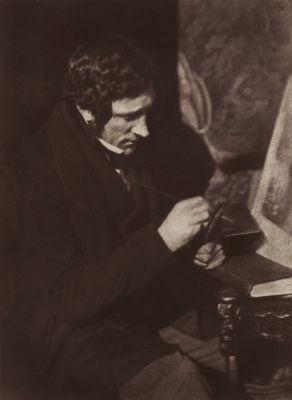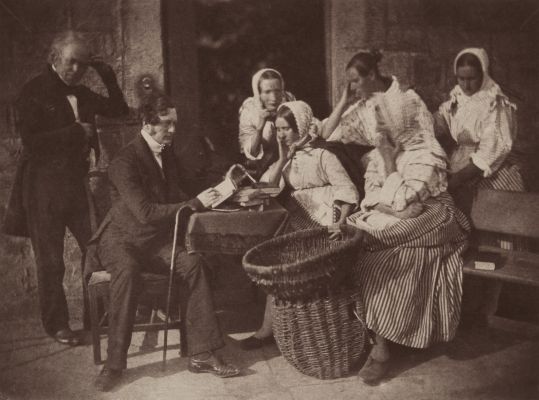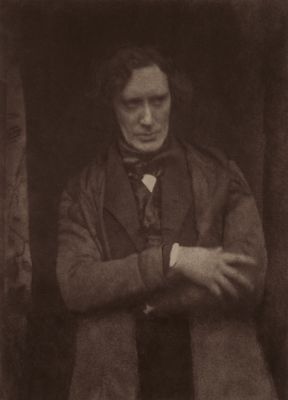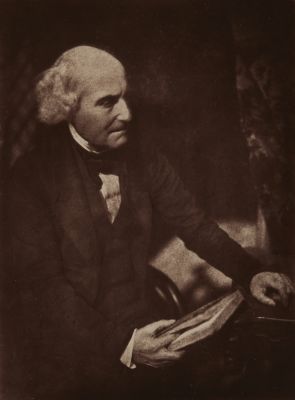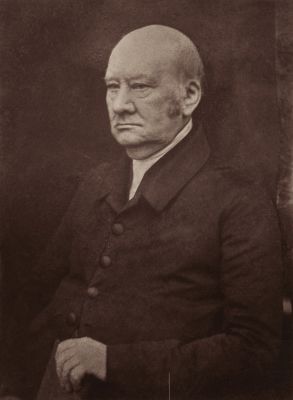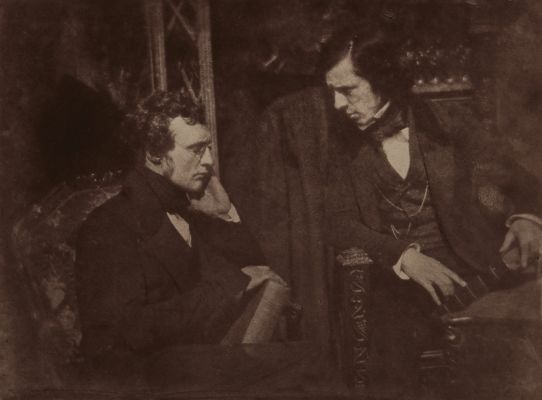
Title
William Scoresby, D.D., F.R.S.Artists
Hill, David Octavious (Scottish, 1802-1870)Adamson, Robert (Scottish, 1821-1848)Publication
Calotypes by D. O. Hill and R. AdamsonDate
1928 plate (1843-1847 negative)Process
Carbon PrintAtelier
T. & R. Annan & SonsImage Size
21.3 x 15.6 cm
One of the rarest photo books of early photography which influenced future photographic literature. It was also the first attempt to publish Hill & Adamson’s work in book form. The significance of this landmark book extends beyond the fact that it is the first monograph on Hill and Adamson or that it was in production for fifty years or that it is exceedingly rare. The Elliot Book, to which it is often referred, also plays an interesting role in the photogravure narrative.
The carbon prints for the Elliot Book were made by Thomas Annan between 1879 and 1882, an early stage for the carbon practice. In 1883 Thomas and James Craig Annan learned the photogravure process. Upon learning the process, James Craig began to experiment with Hill’s negatives and realized the calotypes could be better interpreted in photogravure. The surface quality alone was enough—like calotypes and salt prints, photogravures have a soft, matte surface while carbon prints are hard and reflective. But commercial restrictions limited by the Annan firm’s contract with Elliot prevented James Craig from promoting or selling Hill and Adamson photogravures. Annan eventually however produced an unpublished photogravure portfolio of twenty Hill and Adamson photographs which he lent to exhibitions in Europe and America. He also sent the prints to Alfred Stieglitz for Camera Work in 1905, 1909 and 1912.
In the meantime, Andrew Elliot (1830-1921), a nephew of Hill, had delayed publication of his book in order to complete research on the biographies of the sitters. Shortly before he finished, Elliot died in 1921. His son, George Elliot (b.1867) took over the project but was stymied by ill health. Eventually George’s brother, Dr. Andrew Elliot (1863-1950), finished the project in 1928. But by that time many of the carbon prints having been poorly stored were damaged, leaving only enough for 38 copies of the finished volume.
Inquiry showed that the edition printed in my father’s lifetime still existed in sheet-form, but that through lapse of time the condition of some of the printed matter had deteriorated. Sufficient material was available, however, to make the completion of a limited number of copies possible, and these are now issued in the hope that they may be of interest to those who were associated with my father in the preparation of the pages as well as to others who, like himself, have been attracted to the study of Photography in its early days. James Craig Annan
So originally it was Annan and photogravure that brought Hill and Adamson back into the attention of the public, despite the fact that Annan’s photogravures were preempted by the commencement of The Elliot Book. It is interesting to consider what might have happened to Hill and Adamson’s legacy if the Elliot Book had indeed been published when the carbon prints were completed before the James Craig Annan set of photogravures were ever realized. Comparing the same image in the original salt print, Thomas Annan’s carbon print and James Craig Annan’s photogravure leaves no doubt about which medium best represents the original.
Because the carbon prints in The Elliot Book were made early in the history of the carbon process and were then stored in a basement for half a century, most of the pints in the existing copies of The Elliot Book exhibit surface cracking – sometimes called the craquelure effect. Most of the Hill photogravures made at the same time however remain free from any degradation whatsoever.
Reproduced / Exhibited
National Galleries Scotland Accession number: PGP R 1108
References
Annan, J. C., and William Buchanan. J. Craig Annan: Selected Texts and Bibliography. New York: G.K. Hall, 1994.
Annan, J.C. “David Octavius Hill, R.S.A., 1802–1870,”Camera Work, no. XI (July 1905): 17.
Buchanan, The Art of the Photographer J. Craig Annan 1864–1946.
Anne M. Lyden, A Perfect Chemistry: Photographs by Hill and Adamson (Edinburgh: National Galleries of Scotland, 2017).
Sarah Stevenson, David Octavius Hill and Robert Adamson, Catalogue of their calotypes taken between 1843 and 1847 in the collection of the Scottish National Portrait Gallery (Edinburgh: National Galleries of Scotland, 1981).
Larry J. Schaaf, Sun Pictures Catalogue Eleven, St. Andrews and Early Scottish Photography including Hill & Adamson (New York: Hans P. Kraus Jr. Inc., 2002).
Gernsheim, New Photo Vision, London: Fountain Press, 1942.
Schaaf, Sun Pictures: Catalogue Eleven. New York: H.P. Kraus, Jr, 2002. Print.
McCauley, Anne. “Writing Photography’s History Before Newhall.” History of Photography. 21.2 (2015): 87-101.
Correspondence between James Craig Annan and Helmut Gernsheim regarding the Hill and Adamson photogravures are located at the Harry Ransom Center at the University of Texas, Austin.
